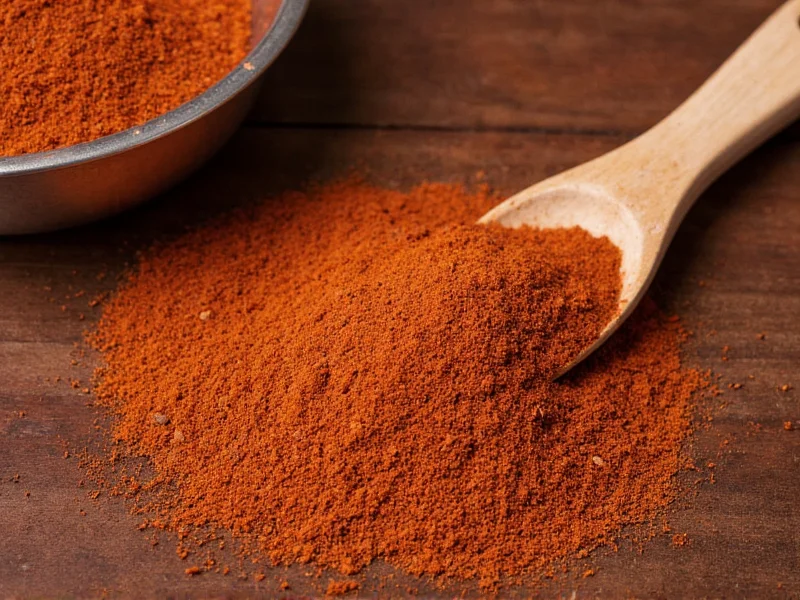Understanding the authentic composition of Cuban spice blend is essential for anyone seeking to recreate traditional Cuban flavors at home. This versatile seasoning forms the flavor foundation for iconic dishes like ropa vieja, picadillo, and Cuban sandwiches. While commercial versions exist, creating your own homemade Cuban spice blend ensures freshness and authenticity while allowing customization to personal taste preferences.
The Essential Components of Authentic Cuban Spice Blend
At its heart, Cuban spice blend maintains a simple yet distinctive profile that sets it apart from other Latin American seasoning mixes. The traditional formula balances earthy, aromatic, and slightly pungent notes that complement rather than overpower ingredients.
Unlike many commercial "Cuban" seasoning products found in supermarkets—which often incorporate turmeric for color (borrowed from Puerto Rican sazón)—authentic Cuban spice blend relies on natural spice colors and flavors. The absence of coloring agents represents a key difference between regional Latin spice blends.
Cuban Spice Blend vs. Other Latin American Seasoning Mixes
Many home cooks confuse Cuban spice blend with similar Latin seasoning mixes. Understanding these distinctions ensures you use the appropriate blend for authentic flavor profiles:
| Spice Blend | Core Ingredients | Distinctive Features | Traditional Uses |
|---|---|---|---|
| Cuban Spice Blend | Cumin, garlic powder, oregano, black pepper | No turmeric or coloring agents; earthy profile | Mojo marinades, ropa vieja, Cuban sandwiches |
| Puerto Rican Sazón | Coriander, cumin, garlic, turmeric, annatto | Bright yellow-orange color from turmeric | Arroz con pollo, pasteles, pernil |
| Mexican Adobo | Chili powder, garlic, oregano, paprika | Smoky, moderately spicy profile | Tacos, enchiladas, carne asada |
| Dominican Sazón | Cumin, oregano, garlic, annatto | Reddish hue from annatto | Sancocho, habichuelas, fried foods |
Creating an Authentic Homemade Cuban Spice Blend
Producing your own Cuban seasoning blend guarantees maximum flavor and authenticity. Commercial versions often include fillers or coloring agents not found in traditional Cuban cooking. The following recipe yields approximately ¼ cup of authentic Cuban spice blend:
Traditional Cuban Spice Blend Recipe
- 2 tablespoons ground cumin (the dominant flavor)
- 1½ tablespoons garlic powder
- 1 tablespoon dried oregano (preferably Cuban oregano if available)
- 1½ teaspoons freshly ground black pepper
- 1 teaspoon salt (optional, adjust to taste)
- ½ teaspoon dried thyme (optional for complexity)
Mix all ingredients thoroughly in a small bowl, then transfer to an airtight container. Properly stored away from light and heat, homemade Cuban spice blend maintains peak flavor for 3-4 months. For optimal freshness, prepare smaller batches that you'll use within 2 months.
Traditional Applications for Cuban Seasoning
Cuban spice blend serves as the flavor foundation for numerous traditional dishes. Unlike some seasoning mixes used as finishing touches, Cuban spice blend typically gets incorporated early in the cooking process to allow flavors to develop fully.
For authentic Cuban mojo marinade—a cornerstone of Cuban cuisine—combine 2 tablespoons of Cuban spice blend with ½ cup sour orange juice (or equal parts orange and lime juice), ¼ cup olive oil, and 4 minced garlic cloves. This mixture works exceptionally well for marinating:
- Lechón asado (Cuban roast pork): Allow pork shoulder to marinate for at least 24 hours
- Pollo asado (grilled chicken): Marinate for 4-6 hours for optimal flavor penetration
- Steak cubano: Marinate flank or skirt steak for 8-12 hours
When preparing arroz con pollo or moros y cristianos (Cuban black beans and rice), add 1-2 teaspoons of Cuban spice blend to the cooking liquid. This subtle incorporation creates authentic background notes without overwhelming other ingredients.
Modern Adaptations and Creative Uses
While traditional applications remain popular, contemporary cooks have discovered innovative ways to incorporate Cuban spice blend into diverse cuisines. These creative adaptations maintain respect for the blend's authentic profile while expanding its culinary possibilities:
- Add ½ teaspoon to roasted sweet potatoes or plantains for a flavor twist
- Mix with olive oil for artisan bread dipping sauce
- Incorporate into ground meat for Cuban-inspired burgers
- Season roasted cauliflower or broccoli for vegetarian mains
- Enhance tomato-based pasta sauces with 1 teaspoon for Latin fusion dishes
When adapting Cuban spice blend to non-traditional dishes, start with smaller quantities (¼-½ teaspoon per serving) and adjust to taste. The cumin-forward profile can dominate delicate dishes if overused.
Troubleshooting Common Cuban Spice Blend Issues
Even experienced cooks encounter challenges when working with spice blends. Here are solutions to frequent problems:
- Too bitter: Often caused by old or burnt spices. Always use fresh spices and store your blend properly. If already prepared, balance with a pinch of sugar.
- Overpowering cumin: Reduce cumin by 25% in your next batch. Cuban cuisine celebrates cumin, but balance remains essential.
- Lacks depth: Add ¼ teaspoon smoked paprika or a pinch of cinnamon for complexity without compromising authenticity.
- Not adhering to proteins: Mix the dry blend with oil or citrus juice before applying to create a paste that sticks during cooking.
Preserving Authentic Flavor Profiles
Maintaining the integrity of Cuban spice blend requires attention to ingredient quality and proper storage. Always purchase whole spices when possible and grind them yourself for maximum freshness. Pre-ground spices lose potency rapidly—cumin, in particular, degrades noticeably within 6 months.
For those seeking the most authentic experience, Cuban oregano (Plectranthus amboinicus) offers a distinct flavor profile compared to Mediterranean oregano. This variety features thicker leaves with a slightly minty, less bitter profile that's traditional in Cuban cooking. While harder to find dried, some specialty markets carry it, or you can grow it yourself in suitable climates.











 浙公网安备
33010002000092号
浙公网安备
33010002000092号 浙B2-20120091-4
浙B2-20120091-4